
Station Name: NORWICH CITY[Source: Nick Catford]
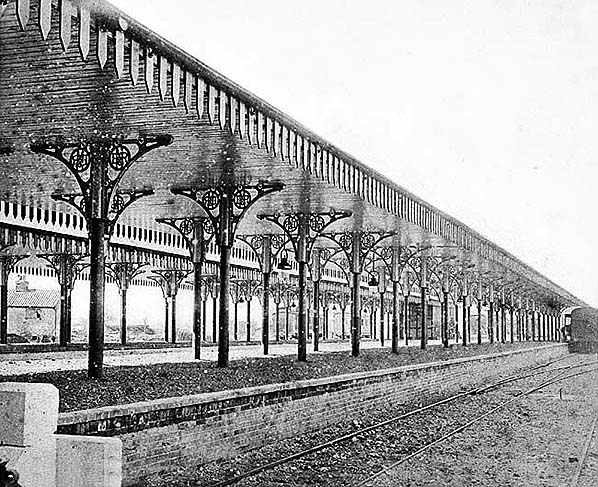 This interesting but undated photo taken from the trackside near the ‘arrivals’ platform, appears to show Norwich City station in a "nearly new’’ state. It was probably taken soon after opening in December 1882. The canopy valance is not yet stained with locomotive smoke; the buffer at the end of the headshunt is not scuffed of work-stained; the underside of the canopy is freshly painted and the carriage road along the platform looks newly laid. As first built, the run-round loop led directly to a loco turntable out of shot to the right. It was later replaced with a larger model near the engine shed. In the background there are two six-wheeled carriage occupying the siding beside the ‘departures’ platform. This interesting but undated photo taken from the trackside near the ‘arrivals’ platform, appears to show Norwich City station in a "nearly new’’ state. It was probably taken soon after opening in December 1882. The canopy valance is not yet stained with locomotive smoke; the buffer at the end of the headshunt is not scuffed of work-stained; the underside of the canopy is freshly painted and the carriage road along the platform looks newly laid. As first built, the run-round loop led directly to a loco turntable out of shot to the right. It was later replaced with a larger model near the engine shed. In the background there are two six-wheeled carriage occupying the siding beside the ‘departures’ platform.Photo from Jim Lake collection  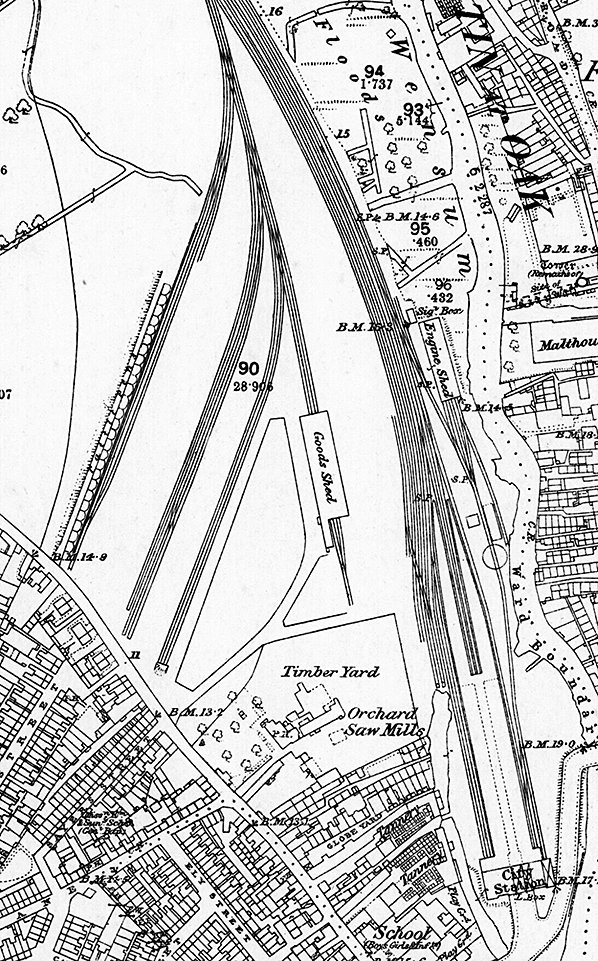
1886 1:2,500 OS map. The station shortly after construction. The original 45 foot loco turntable was in place and could be accessed from the shed end and directly from the platform runround. The sidings for coal merchants were complete. Click here for a larger version.
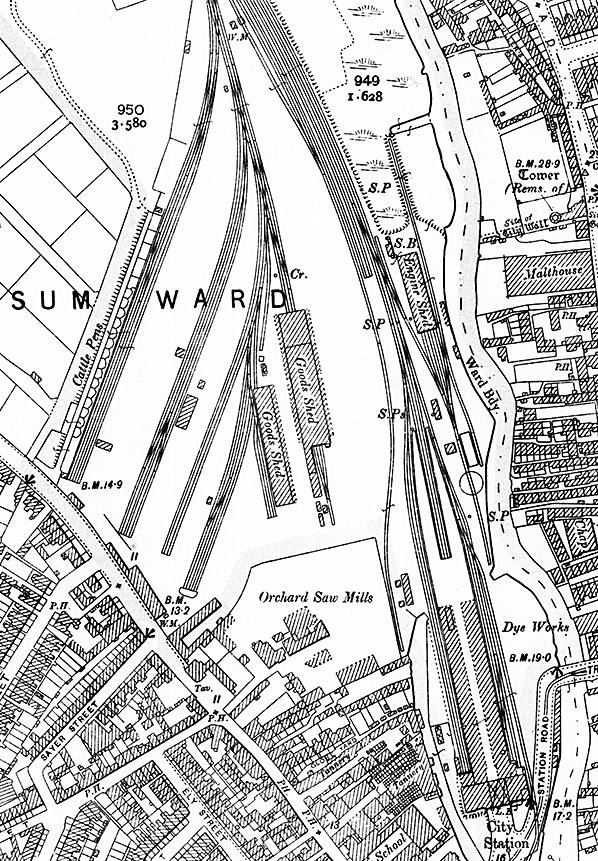
1907 1:2,500 OS map. By 1905 the goods facilities had been enhanced with a second goods shed, stables and weigh bridge and the direct platform access to the engine shed via the turntable had been removed. Click here for a larger version.
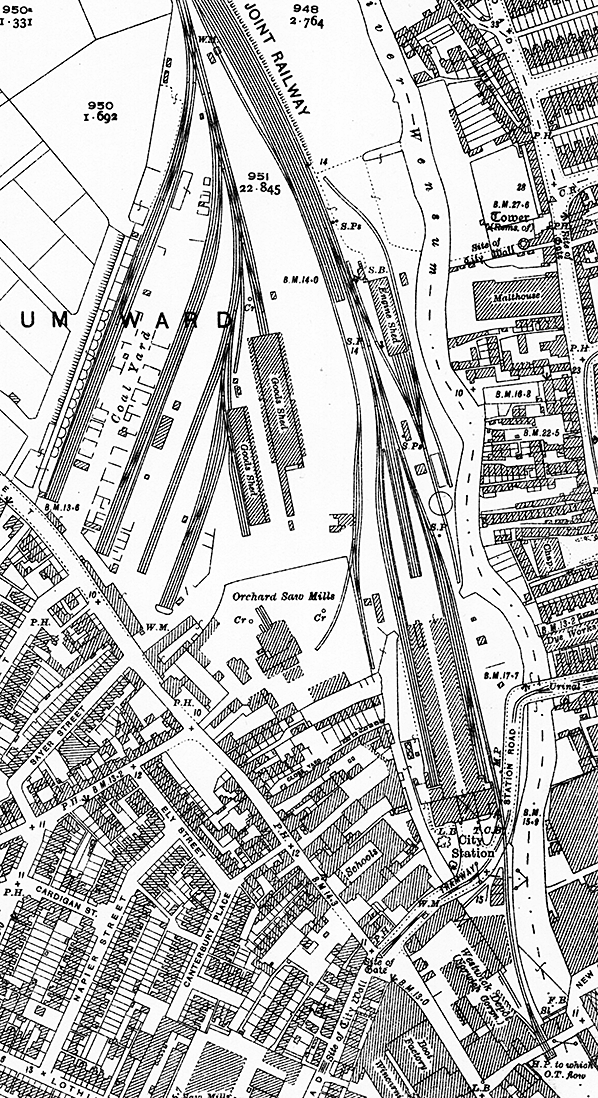 1928 1:2,500 OS map. Comparing the loacation in 1886 with 1928 we see that the land north-west of the station had been reclaimed and developed, and the ‘Liable to Floods’ note on the map had gone. The coal yard has been expanded with coal bins now shown. Note the siding running across Station Road to a jetty River Wensum and into Norwich Corporation's Westwick Depot. Click here for a larger version.
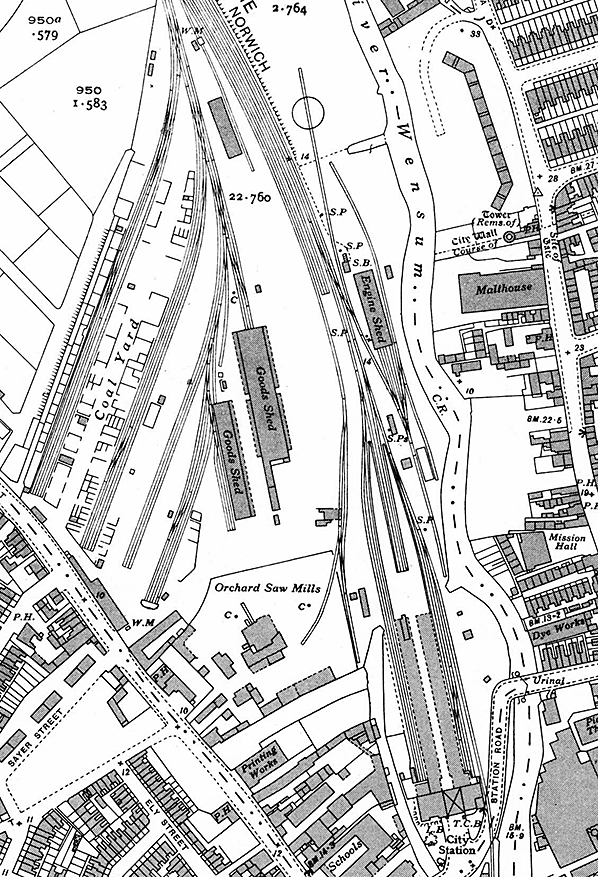
1947 1:2,500 OS map. The 1947 map was surveyed in 1938, before World War 2. For much of the city of Norwich the understandable but late publication rendered the new map extensively inaccurate. Much of the city was destroyed in April 1942. As regards City station, then engine shed is wrongly portrayed and the original platform canopies and station building are shown. The Norwich Corporation sidings north of the terminus were in place by this time. Click here for a larger version.
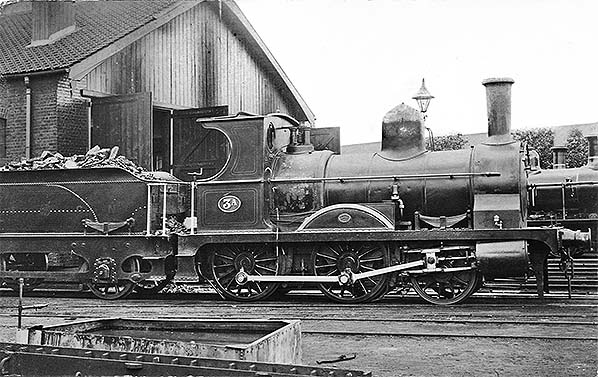
An interesting view of 2-4-0 locomotive No.3A outside the first engine shed at Norwich City, sometime prior to 1899 when this locomotive was withdrawn. No.3A was from a batch of 0-6-0 Tanks acquired from the Cornwall Minerals Railway and one of, it is thought, a pair converted by Marriot into 2-4-0 Tender form. An illustration of one of the pair shows it carrying Eastern & Midlands Railway livery and the number '18' but among the many unclear aspects of the ex Cornwall locomotives is the number carried by the other rebuild and which of the pair became No.3A under the M&GN. Whatever the truth, withdrawal came in the 1898 - 9 period and the number 3A was reapplied to one of the 0-6-0T's, in December 1899, which later became No.95 and then LNER Class J93 No.8485 until withdrawal in December 1947.
Copyright photo from John Alsop collection
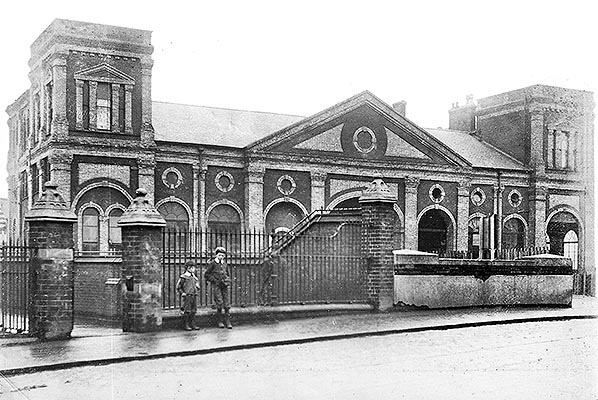
Norwich City station frontage c1902.
Photo from William Brody
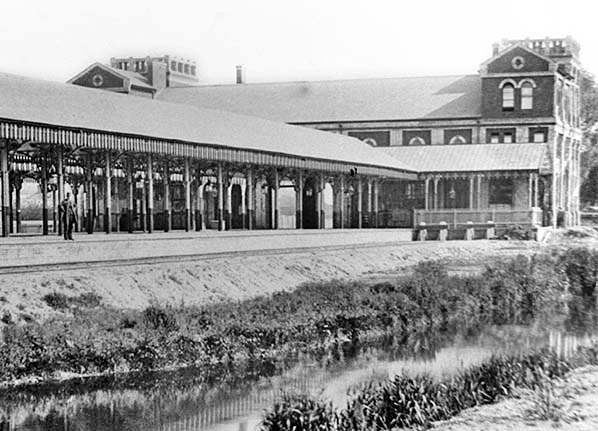
The west platform and station building at Norwich City around 1900 seen from where a siding to serve Cushion’s timber yard would be provided in 1917. The drainage channel in the foreground was culverted under the station from the River Wensum and, in effect, put the station on an artificial island constructed by the railway builders.
Photo from John Mann collection 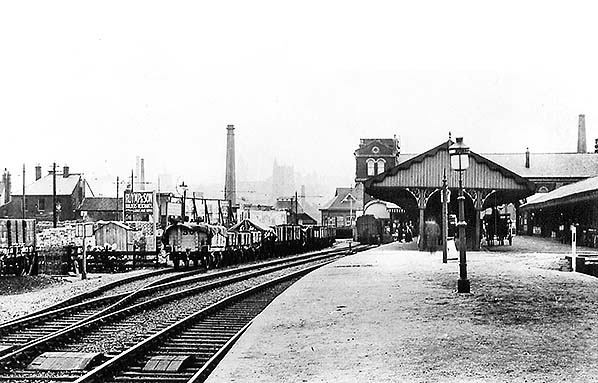
Norwich City taken sometime after 1901 looking along the east platform towards the city centre. The large arch led to Station Road which curved alongside the station where the power supply posts for the city’s 3’6” trams can be seen. The train of trucks are on the line that crossed the street into the corporation yard and onto the twin wharf on the Wensum.
Photo from John Mann collection 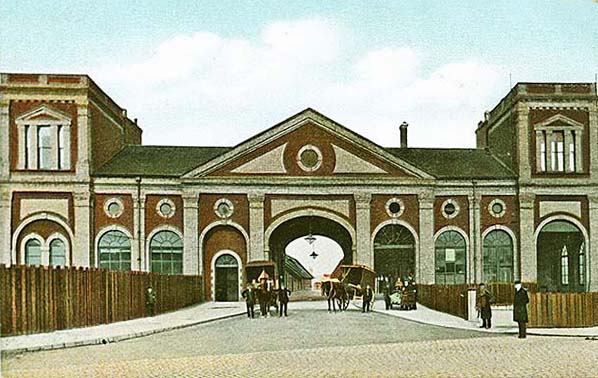 A postcard image of the imposing building at Norwich City from about 1905. The central arch led to the platform areas, passenger facilities were on the left and the open arch on the right was the entrance to parcels and telegraph offices.
Copyright John Alsop collection 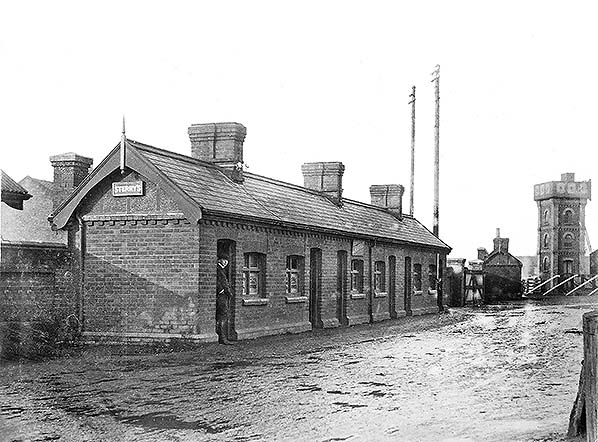 Sterry & Co coal merchant's office at the entrance to the coal yard in 1908. The water tank is at the south end of the coal sidings.
Photo from William Brody 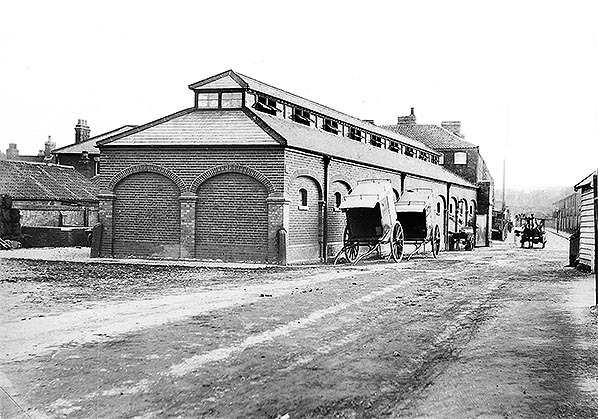 Sterry's coal officeat the entrance to the coal yard in 1908. The water tan.
Photo from William Brody 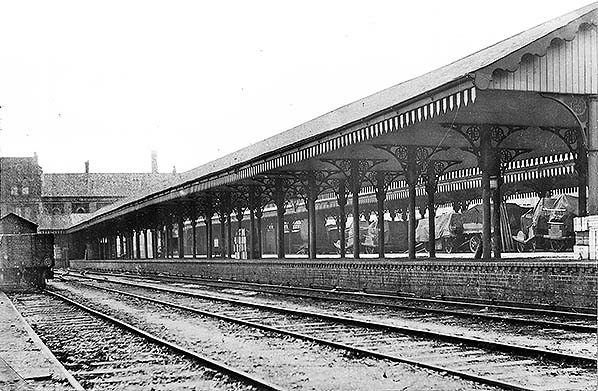 Norwich City station looking towards the station building on a unknown date but perhaps within the first two decades of the twentieth century. Dominating the scene is Platform 1 on the east side of the station. The centre track is the locomotive release road while at far left is the Down side siding, part of the station's goods facilities. The rails appear to be short lengths, probably twenty feet as was once quite common. In the left background can be seen the entrance arch through the station building which led directly onto what is usually known as a cab road between the two plaform canopies, the bay platforms at Norwich City being located further north, to the right of the camera. The 'cab road' in this case seems to have been mostly used for goods and, as it happens, an interesting selection of loaded road vehicles may be seen. Some of these vehicles are single axle low-loading types while at least one of the two axle vehicles has rubber, albeit solid, tyres. The latter type was commonly hauled by road locomotives, ie steam traction engines. On the nearest platform are seem stacked boxes and crates, strategically positioned ready for loading onto a train. Just visible are the 'EMR' (Eastern & Midlands Railway) monograms cast into the spandrels supporting the canopy. Each spandrel is identical but their mounting on opposite sides of the stanchions means one monogram of the pair is reversed, meaning that one can be seen right-way-round either side of a stanchion. This was common practice among most railway companies, being by default the result of using a single casting mould. Platform lighting, just visible beneath the canopy, is of the casement type and something of a mystery regarding dates as other photographs, some later and some thought to be earlier, show suspended globe type lighting.
Photo from John Mann collection 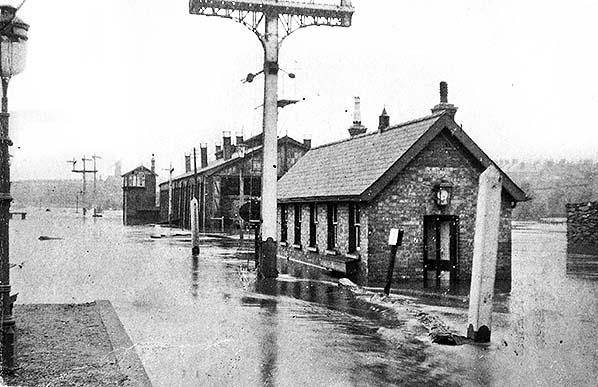
Norwich City station was always prone to flooding sitting, as it did, a little above the normal level of the adjacent River Wensum. The year 1912 was a particularly wet one for Norfolk and on Monday 26 August the already sodden ground was subjected to 7.34 inches of rainfall, which equals three months average rainfall for the region. The Yare burst its banks and the Wensum became a raging torrent with parts of Norwich disappearing under four feet of water within three hours.This scene believed to have been taken the following day, Tuesday 27 August looks north from the east platform and shows a considerable depth of water around the enginemen’s mess-room, the shed and Norwich City South signal box. The river, when not in flood, flowed behind the engine shed.
Photo from John Mann collection 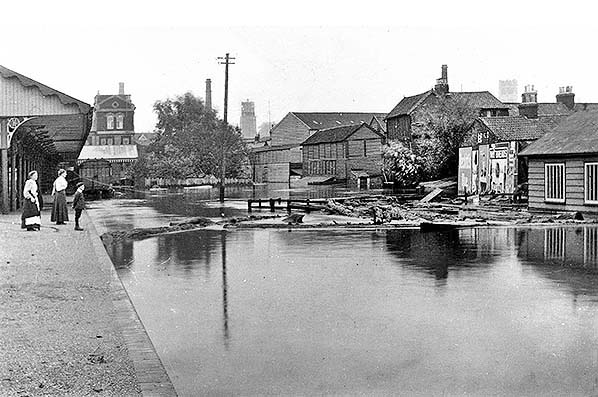
Three people look over the west plaform towards the timber yard at Norwich City in August 1912, surveying the extensive flooding.
Copyright photo from John Alsop collection 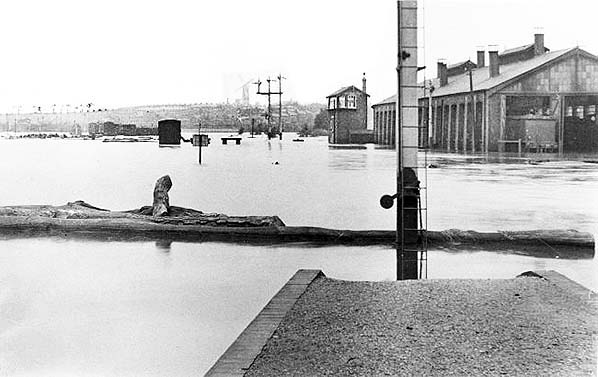 This northwards-facing view is again believed to have been taken the following day, Tuesday 27 August, and shows the flooded engine shed and tracks outside Norwich City station viewed from one of the platforms. At least two locomotives are in the shed while in the foreground two tree trunks lay across the tracks. At the time this photograph was taken, the water would have been receding and lying just a few inches deep. In the distance the railway curves north-westwards towards Hellesdon station. In the far distance and left of centre can just be discerned Upper Hellesdon windmill. The 88 feet tall mill, which stood on Press Lane and was the third mill on the site, was constructed in 1875. On 4 May 1913 the mill caught fire due to an electrical fault in the rolling mill which stood at its base and never worked again. It was finally demolished in 1920 and its bricks reclaimed for use in a house building scheme.
Photo from Jim Lake collection 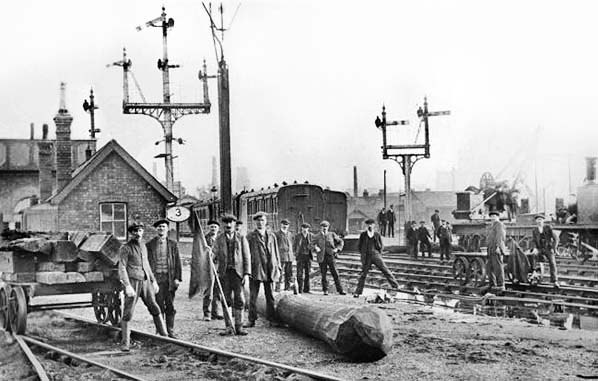
This and the following two views show the cleaning-up operation following the flooding of 27 August 1912. It is probably a day or two later as most of the water has now receded. In the foreground a group of workers pose with a tree trunk which appears to have been cut off from its roots and the trolley, left, is loaded with wood of various shapes. The camera if facing towards the terminus and coaching stock can be seen at the platforms. The engine shed is behind and to the left of the camera. The water tower stands in the left background and the brick building between it and the camera is the enginemen's mess. Note the somewhat frail-looking somersault signals and the locomotive and crane on the right. Also on the right but nearer the camera, sone point rodding has received some damage. The meaning of the oval plate bearing the humber '3', left of centre, is unclear.
Photo
from John Mann collection
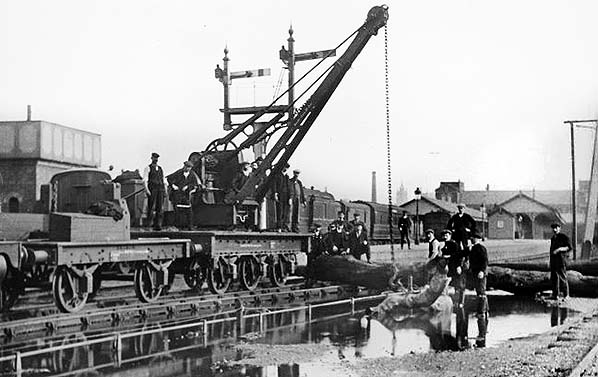 With the terminus visible in the background, we here see another view of the post-flood cleaning-up operation. The crane is in the process of removing a tree trunk and at far right is what appears to be a dislodged signal post. Information on the crane has proved elusive and the wording on the solebar of both it and its jib carrier are unreadable. It is likely the crane had been sent to Norwich from Melton Constable where it was probably normally employed in and around the works. With the terminus visible in the background, we here see another view of the post-flood cleaning-up operation. The crane is in the process of removing a tree trunk and at far right is what appears to be a dislodged signal post. Information on the crane has proved elusive and the wording on the solebar of both it and its jib carrier are unreadable. It is likely the crane had been sent to Norwich from Melton Constable where it was probably normally employed in and around the works.Photo from John Mann collection 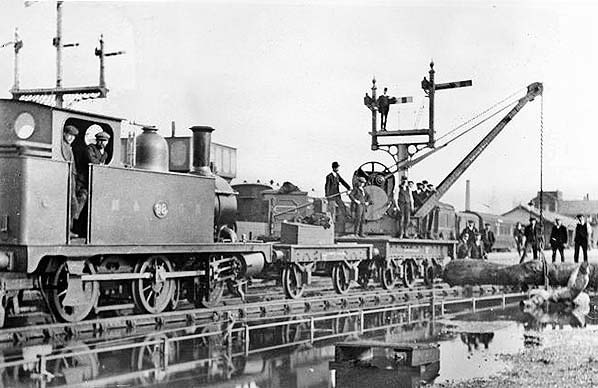
This view is similar to the previous but the man standing on the signal bracket tells us the two photographs were taken a few minutes apart. The locomotive is outside cylinder 0-6-0T No.98, originally No.14A, from a class of nine which the M&GN classified simply as 'Shunting'. The M&GN initials are placed either side of the numberplate ie ' M & - numberplate - G N' and the M&GN crest was located above the numberplate. The crest is just visible in this view and while photographs of these locomotives are not rare, very few show the crest with any clarity. The history of these locomotives is rather intriguing and confusing. Their origin was the Cornwall Minerals Railway ('Minerals', ie plural, being correct) which had eighteen examples. Of those nine ended up in GWR stock converted to saddle-tanks and of the remaining nine, some ended up with the Colne Valley & Halstead Railway and some with the M&GN apparently via the Lynn & Fakenham Railway. It is thought just three of the Cornwall examples came to the M&GN but mystery surrounds which three and the origin of the remaining six. The M&GN examples went on the become LNER Class J93 and three survived, just, into British Railways days but were never to receive their allocated BR numbers. No.98, which was the oldest example and dated from 1897, was not among the late survivors, being withdrawn by the LNER in January 1947 as No.8482.
Photo from John Mann collection 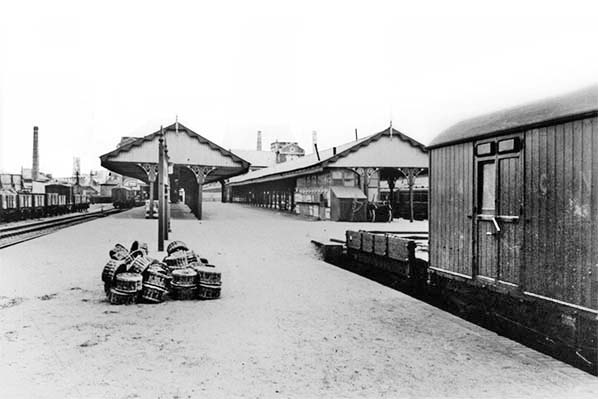 Norwich City looking towards the station buildings from the east platform. The round baskets in the foreground appear to be crayfish pots, this being an age-old fishing industry in Norfolk.
Copyright photo from John Alsop collection 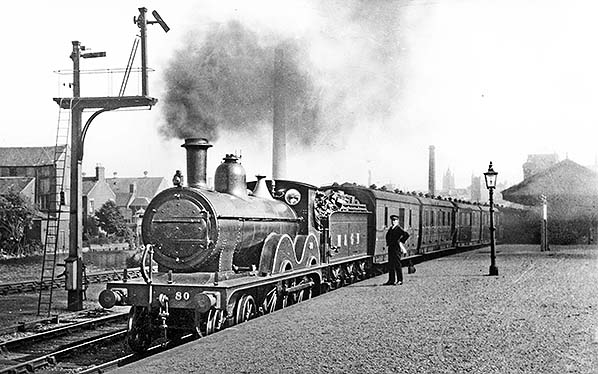 A class 2 train ready for departure from the east platform at Norwich City in June 1929. The South ‘box signalman had set the road and the somersault signal was lowered. The stock was six-wheeled none gangway variety. The locomotive, 4-4-0 no. 80, carried the livery and lettering of the still independent joint railway. It was an example of Johnson’s M&GN Class C, later absorbed into LNER stock as Class D52. The locomotive was built in 1899 by Beyer Peacock Ltd., Works No.4072 - and rebuilt in 1919. Its allocated LNER number 080 was not applied in 1936 and it was withdrawn from Melton Constable in early 1937. A class 2 train ready for departure from the east platform at Norwich City in June 1929. The South ‘box signalman had set the road and the somersault signal was lowered. The stock was six-wheeled none gangway variety. The locomotive, 4-4-0 no. 80, carried the livery and lettering of the still independent joint railway. It was an example of Johnson’s M&GN Class C, later absorbed into LNER stock as Class D52. The locomotive was built in 1899 by Beyer Peacock Ltd., Works No.4072 - and rebuilt in 1919. Its allocated LNER number 080 was not applied in 1936 and it was withdrawn from Melton Constable in early 1937.Photo from John Mann Collection. Locomotive information from Transports of Delight
website with thanks 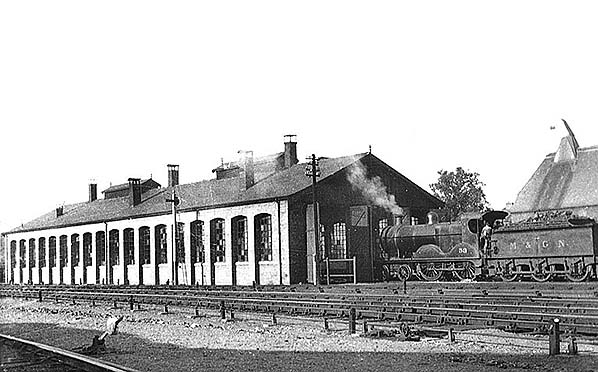
The large three-road engine shed at Norwich City as it was in 1935. It suffered total destruction in air-raids in April 1942. The locomotive outside the shed was M&GN No. 53, one of Johnson’s Class C 4-4-0 engines. It later became LNER Class D54. It was built in 1896 by Sharp Stewart & Co., Works No.4192 and, in 1910, rebuilt with a Belpaire boiler. It was further rebuilt in 1925 and in July 1937 became LNER No.053. Withdrawn from South Lynn shed in January 1940.
Photo from John Mann Collection. Locomotive information from Transports of Delight website with thanks 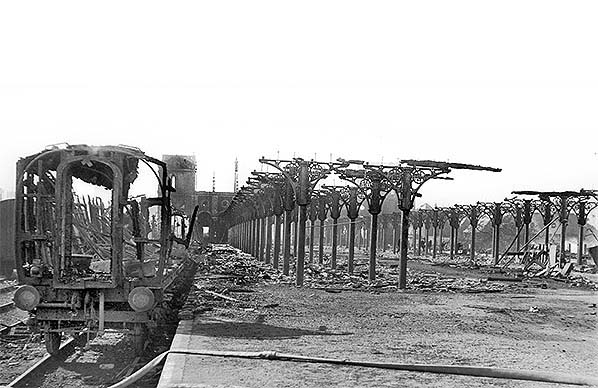 For five successive nights from 27 April 1942 the city of Norwich was subjected to massive aerial bombardment by the German Luftwaffe This is the scene at Norwich City on 28 April. Compare the image with those of 1901 and 1912 and the picture of almost total devastation requires no further explanation.
Photo from Jim Lake collection 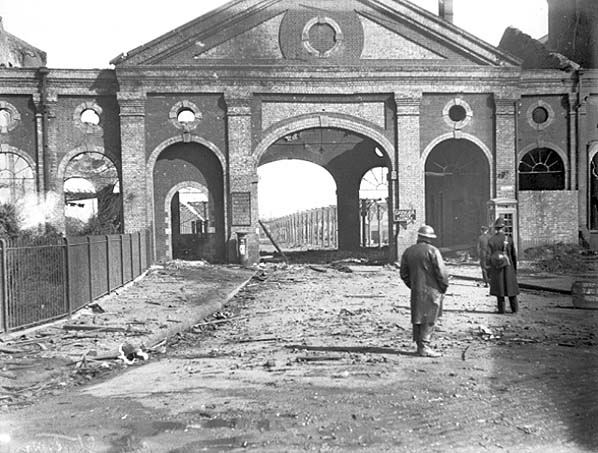
The view from Station Road, Norwich City station, on 28 April 1942, following the previous night’s air-raids, as reported by the Eastern Daily Press.
Photo copyright Archant Library/EDP 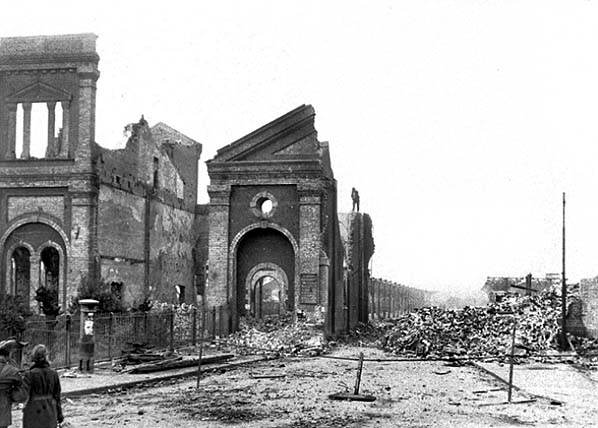
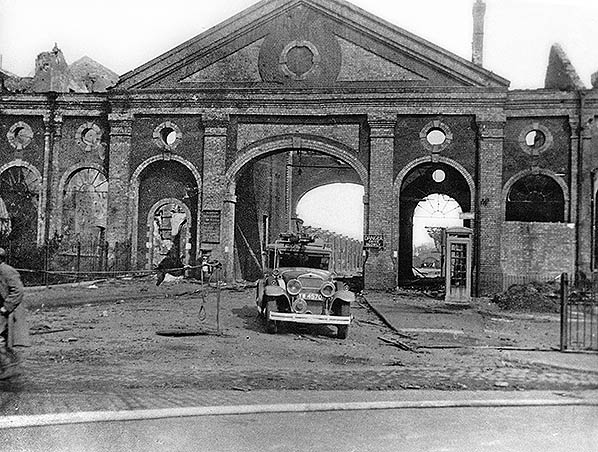
The once-grand entrance arch at Norwich City as it was at the end of April 1942. Empire, righthand drive Studebakers were assembled in Canada from parts supplied from the USA and the vehicles shipped over. This may have been complete or as rolling chassis on which British coachbuilders would have supplied bodies to the requirements of customers. That in the picture appears to be one of those shipped over complete. The reg number dates the vehicle to 1928. The model is a little more difficult to determine but it is probably a 'Dictator' as it carries that model's style of bumper and grille. With the coming to power of Adolf Hitler the name was decided as being unsuitable for the European market so it came to be known as either the 'Commander' or the 'President'. Note the masked nearside headlamp and the fog lamp. The offside headlamp is unmasked and would have had its bulb removed - common practice in wartime. A K3 telephone kiosk is seen on the right.
Photo from John Mann collection 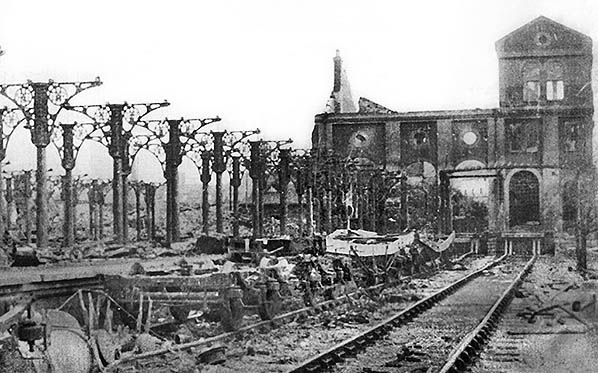 Passenger carriage underframes stand in the west palform at Norwich City at the end of April 1942 with the bomb-destroyed station building behind. The platform canopy supports survived the enemy attacks but most were removed when the station was rebuilt,
Photo from Jim Lake collection 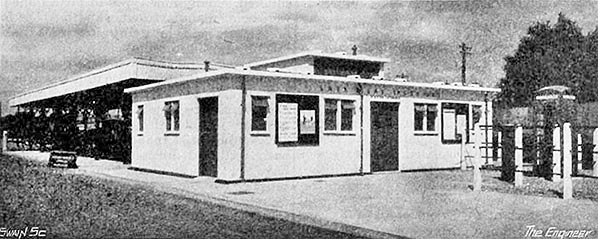 Following air raid damage in 1942 the station wsas rebuilt and reopened as seen in this 1945 photo.
Photo from Grace's Guide 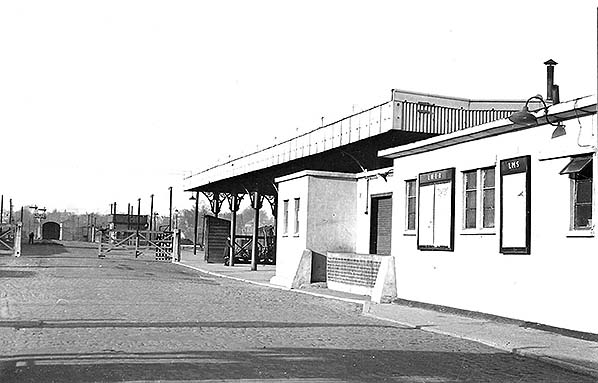
City station had been cleared of wartime destruction by 1948 and its grand buildings replaced by utilitarian concrete slab structures remodelled from LNER lineside huts. The cobbled road once passed under the arched entrance to the platforms. It is notable that the LNER and LMS retained separate notice-boards.
Photo from John Mann collection
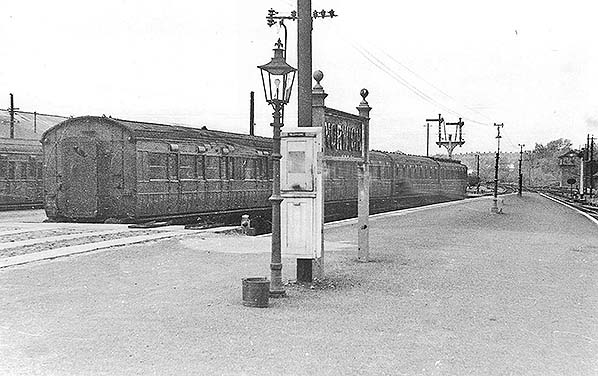
A view of the bay platforms at Norwich City taken in April 1949. The station had always been called simply ‘Norwich’ by the Midland & Great Northern. The South signal box, by then the station’s only ‘box, can be sen in the distance.
Photo from John Mann collection 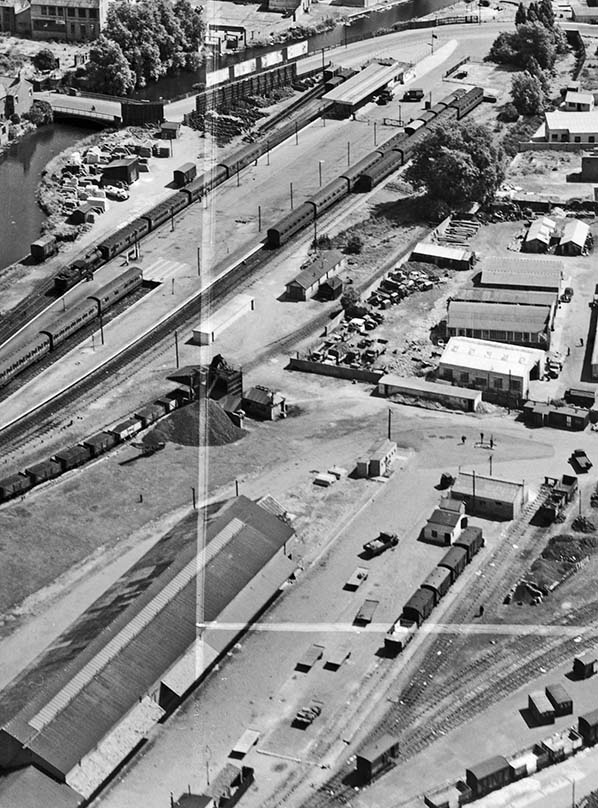
An aerial view of Norwich City station in 1949 looking towards the south-east. The post-war minimalist station buildings were in place and the platform areas, previously substantially covered by canopies, were open and offered no shelter. In the foreground the goods shed roof had been repaired following bomb damage. The locomotive in the eastern platform has possibly run round an arriving train and is about to move the empty coaches from the platform. Click here for a larger version.
Copyright photo from Britain From Above, reproduced with permission 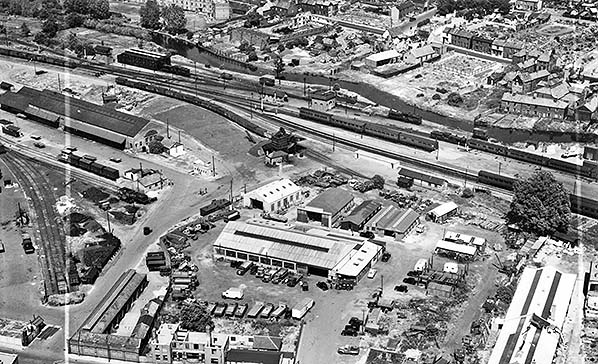 Norwich City seen from the air, looking to the north-east in 1949. In the lower left the horse stables lay at the entrance from the road and there is visible bomb damage on the adjoining property. We can see the 1944 replacement engine shed, much smaller than the original. The three locomotives in view all appear to be ex-Great Eastern 4-4-0 and 0-6-0 types. Click here for a larger version. Norwich City seen from the air, looking to the north-east in 1949. In the lower left the horse stables lay at the entrance from the road and there is visible bomb damage on the adjoining property. We can see the 1944 replacement engine shed, much smaller than the original. The three locomotives in view all appear to be ex-Great Eastern 4-4-0 and 0-6-0 types. Click here for a larger version.Copyright photo from Britain From Above, reproduced with permission 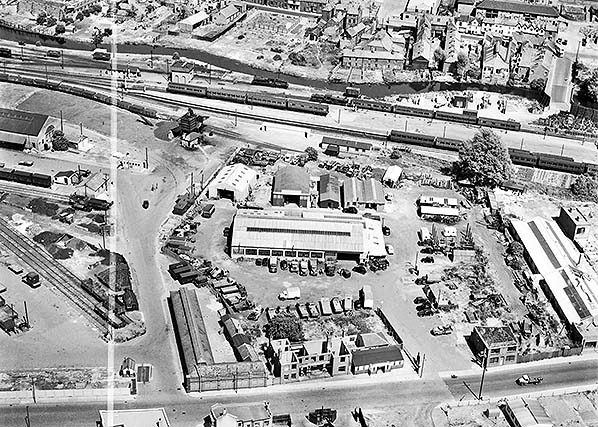
From this 1949 aerial view of Norwich City looking roughly eastwards we can see in some detail the eclectic mix of passenger carriages in use on former M&GN lines at the time.
Click here for a larger version Copyright photo from Britain From Above, reproduced with permission
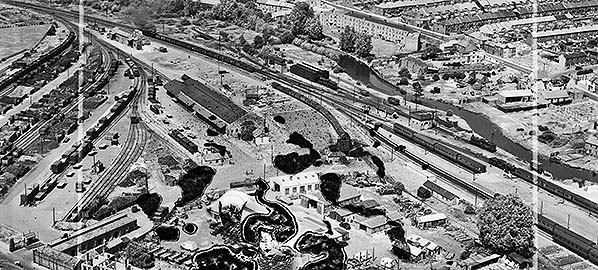
An informative but unfortunately damaged 1949 print of an aerial view of Norwich City looking roghly northwards. The 1931 60-foot turntable is in clear view. A loaded coal(?) train was being shunted, presumably to wait for space in the extensive coal traders’ sidings on the left of the image. The close proximity of the railway infrastructure to the prone-to-flood River Wensum is clear to see.
Click here for larger view. Copyright photo from Britain From Above, reproduced with permission 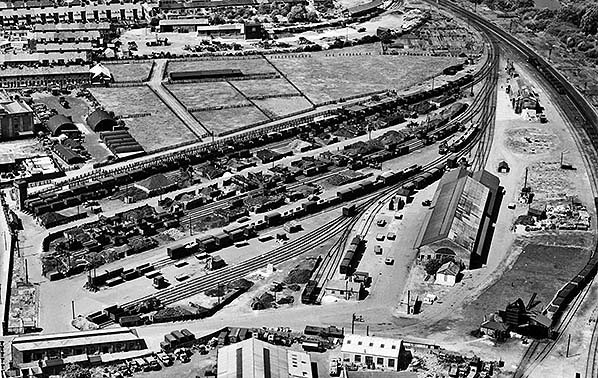
The coal merchants’ sidings can be seen clearly in this 1949 aerial image of Norwich City looking towards the north-west. At the time paddocks remained beyond the sidings. The Norwich Corporation roadstone sidings can be seen at the top of the image. The stable block is seen bottom left with the goods shed on the right. The furthest sidings served the coal yard; a water tower is seen at the end of the coal yard. The large building beyond the sidings on the left is Pickford's warehouse.
Click here for larger view. Copyright photo from Britain From Above, reproduced with permission 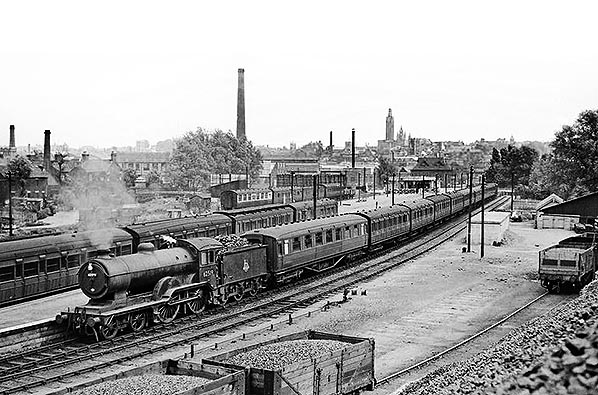 A busy scene at Norwich City which belies the fact the station was the terminus of what was in effect a single track branch line. The early BR logo on the locomotive tender and the coaching stock liveries tell us this view dates from early BR days. The ex LNER carriage in the background wears the early carmine and cream livery while the Gresley bow-ender coupled behind the locomotive appears to still be wearing varnished teak livery. The terminus can be seen in the right background, in the patched-up form it took following wartime bomb damage. At bottom left one siding has been lifted, probably that which at one time served Orchard Sawmills. The locomotive, an ex-GER 4-4-0 and number unreadable, carries the headcode for a stopping service. It also carries a shedplate on its smokebox door, informing us the photograph is no earlier than 1950. Shedplates were introduced across BR early that year, perpetuating earlier LMS practice. At this time, Melton Constable shed had a number of D15 and D16 class locomotives on its books as did South Lynn. The train might be judged as rather lengthy for a local service to Melton Constable so this train may be for King's Lynn. A timetable check shows there was such a service during this period, along with a few which for some mysterious reason continued to Weybourne having arrived at Melton Constable from Norwich. In the background, right of centre, can be seen the clocktower of Norwich City Hall and to its right the tower of Saint Peter Mancroft church. The presence of these structures serve well to illustrate just how poorly sited City station was for the centre of Norwich.
Copyright photo by C H A Townley 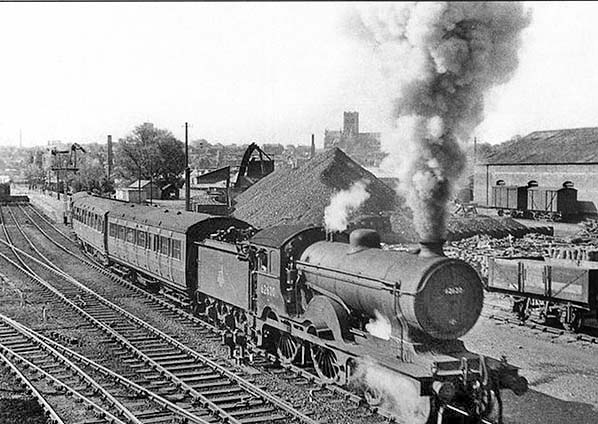
Taken in 1952 at Norwich City, a class 1 train was caught departing the western platform hauled by an ex-Great Eastern D16 4-4-0 62620, a Melton Constable engine when it was withdrawn in October 1955. It was built at Stratford in 1923. LNER locomotives were drafted in after that railway assumed operational control of the joint railway in 1937.
Photo
from CF Rudkin collection
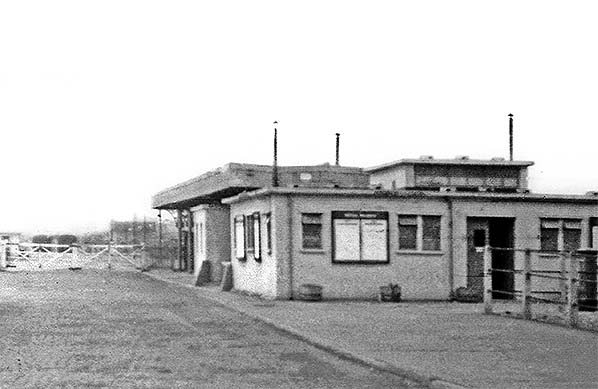
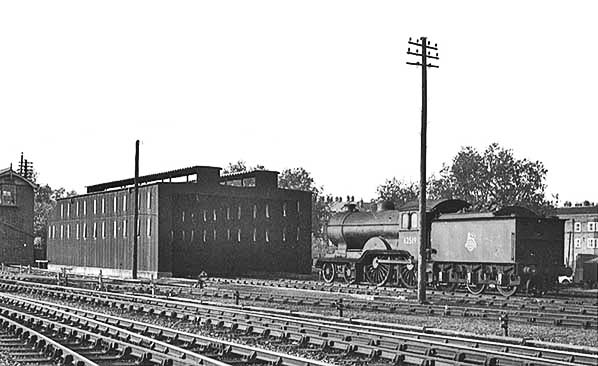
The second locomotive shed at Norwich City as it was on 25 May 1956. It replaced the bomb-destroyed original in 1944, providing two roads instead of three. It was built of steel uprights supporting corrugated iron sheets. D16 4-4-0 62569 from King’s Lynn shed was between turns. A 1907 engine from Stratford Works it lasted until 1957.
Photo copyright JPG / Roger Griffiths collection 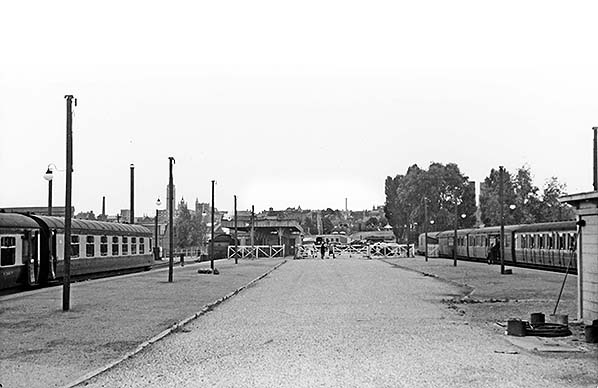 In June 1956 a train made up of ex-LMS coaches, painted in BR maroon and cream livery, had arrived at Norwich City. The locomotive was in the headshunt. The coaches suggest that this train was the through carriages from Midlands cities. In the west platform passengers were boading a train made up of ex-LNER corridor coaches.
Photo from John Mann collection 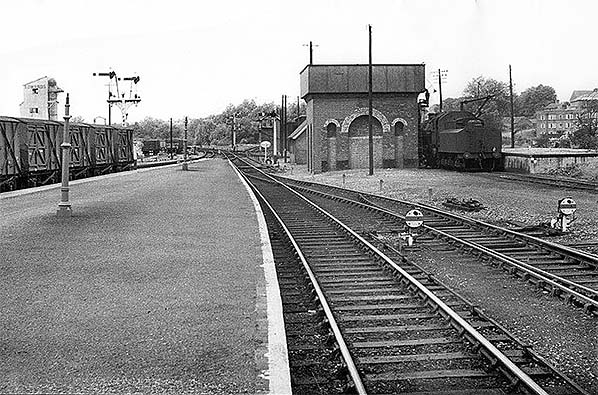
A view along the east side platform at Norwich City in 1957. An Ivatt Class 4 2-6-0 was standing by the water tower, another feature that was rebuilt following war damage in 1942. Locomotives of this class were allocated in number to East Anglian sheds in the early 1950s - ironically an ex-LMS type replacing LNER locomotives that had previously replaced LMS types in the 1930s! Melton Constable shed was
sent 11 new Class 4s, 43146-56, all built by BR at Doncaster Works. Photo from John Mann collection 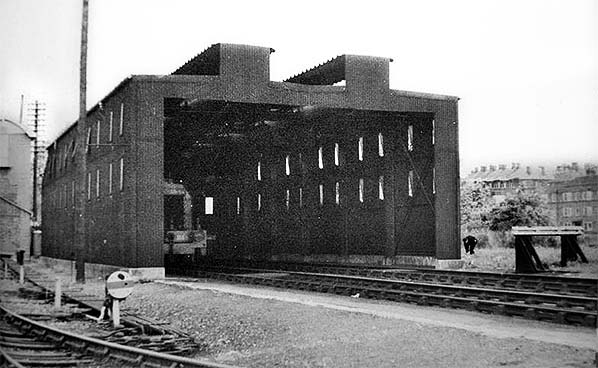
A view of Norwich City’s post-war engine shed in 1958. It was by then a sub-shed of Melton Constable (32G) - both sheds closed in 1959. A diesel shunter was in the shed when this photo was taken.
Photo from Jim Lake collection 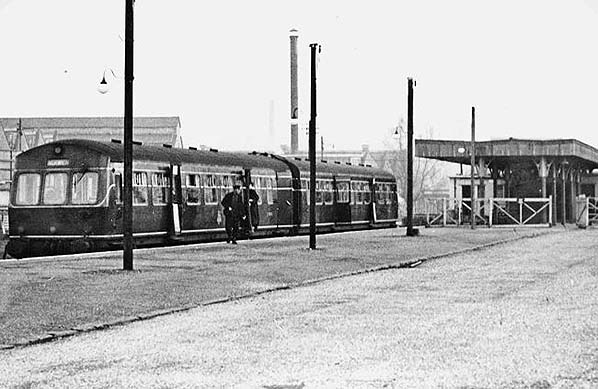
Sometime between 1955 and 1959 a Metro-Cammell DMU from the early 79xxx series stands at Norwich City after arrival from, presumably, Melton Constable. Judging by the number of open doors, this train had arrived with a fair compliment of passengers. The DMU is in its original livery and the Driving Motor, facing the camera, carries the early BR 'Ferret & Dartboard' logo on its bodyside. In a few cases, whether by accident or design, this logo was also applied to Driving Trailers. It was eventually replaced by the coaching stock roundel, on motor coaches only. On the platform the portable barriers which seemingly haunt every photograph of the station taken postwar can be seen, along with the remaining short section of canopy beneath which were some of the temporary buildings, a legacy of the wartime damage, which remained in use until closure to passengers and indeed were to mostly survive total closure in 1969.
Photo from John Mann collection 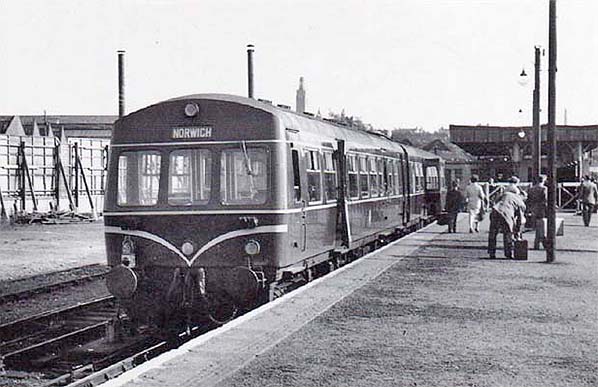 Diesel Multiple units gradually took over most local services in East Anglia after September 1955 and the Norwich City line was no exception. In this view from 1959 a Metropolitan Cammell 2-car set had arrived at City station’s east platform.
Photo from Stuart McPherson's Flickr Photostream 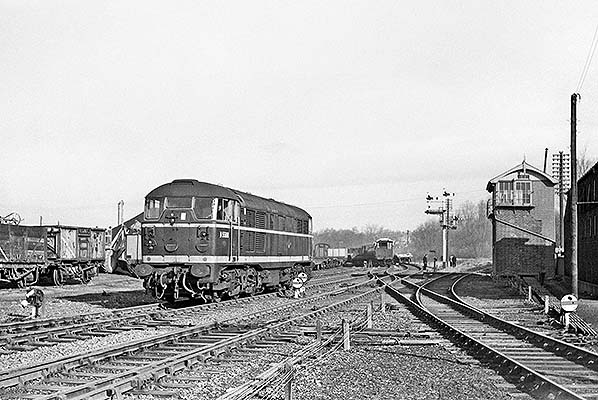
At Norwich City in 1959 a Brush Type 2 (later Class 31) diesel was heading for the west platform, light engine. The imposing signal box was still in place but was taken down soon after the station closed. These locomotives were common-place across East Anglia as they gradually replaced steam in
the mid-1950s Photo from John Mann collection
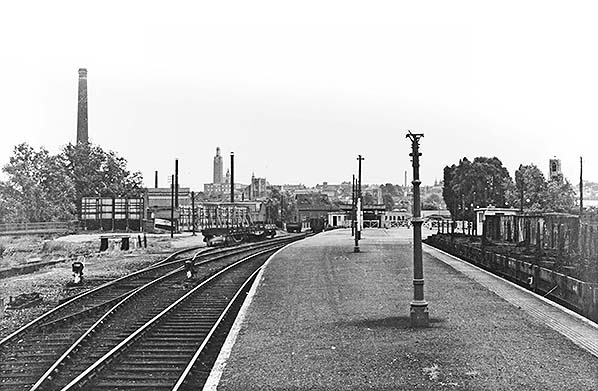
An undated photo of the east platform at Norwich City probably taken in the late 1950s. The bay platforms may have seen their last passenger departure and were used for wagon storage and the rails on the locomotive run round appear disused.
Photo from Ted Burgess collection 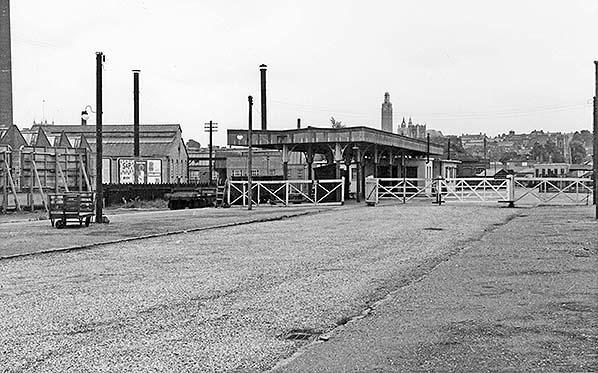
An undated photo of the east platform and station building at Norwich City probably taken in the late 1950s. It is hard to escape the air of not-quite-shabby that the photo displays. The station closed to passengers in March 1959.
Photo from John Mann collection 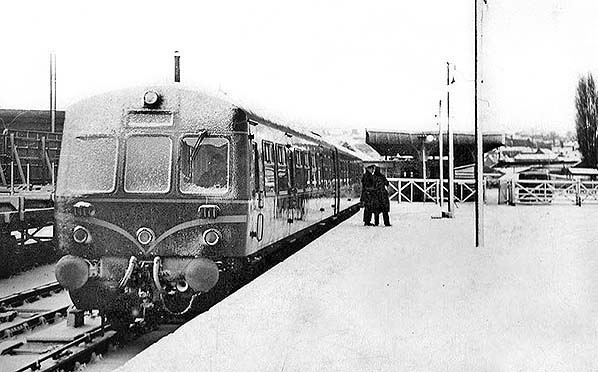 A cold, desolate and war-wounded Norwich City station on Saturday 7 February 1959, less than one month before the station along with most, but not all, of the former M&GN system closed to passengers. The DMU is about to depart for Melton Constable and the driver is in the cab clearing snow from his windscreen. The DMU is one of the Metro-Cammell 79xxx 'Yellow Diamond' types. These units differed in a number ways to the later Metro-Cammells which went on to become Class 101. The 79xxx Metro-Cammells comprised only 36 two-car units, of which seven worked in the Manchester area. The remainder spent their entire lives in East Anglia and East London but all had gone from passenger service, through no fault of their own, by 1969. The two boxes, one beneath each outer windscreen, were receptacles for the multiple-unit jumper cables. In early years, as here, the cables where stowed in the cabs when not required but later dummy receptacles, for stowage when the units were not running in multiple, were fitted on the cab front and the cables usually kept on the outside. This was one of the areas in which these units differed from Class 101. Another was the saloon heaters, each 79xxx car being fitted with only one so passengers, if there were any, would have had a chilly journey on that February day in 1959.
Photo from Ted Burgess collection 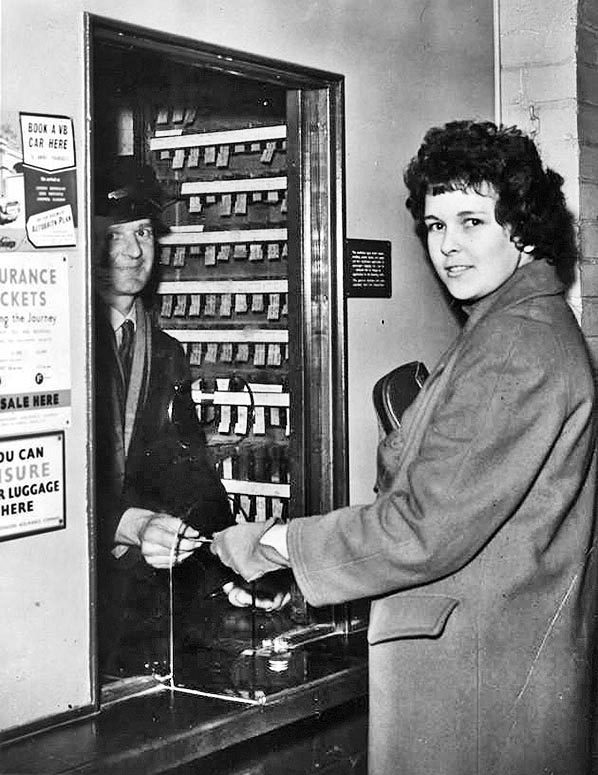 Norwich City booking office on 27 February 1959, the last day of public service.
Photo copyright Archant Library / EDP 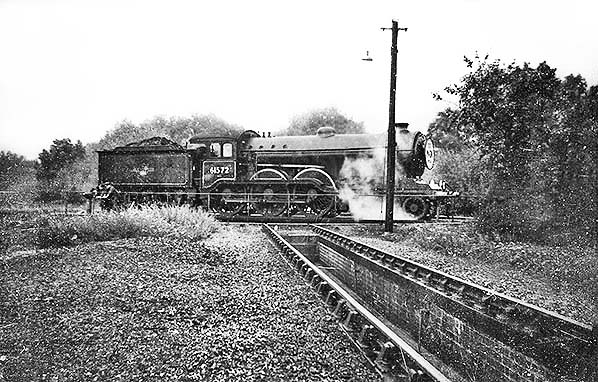 B12 4-6-0 61572 was probably the last locomotive to use the 60 foot turntable at Norwich City when it was used for a commemorative excursion, M. & G.N. and Waveney Valley Rail Tour, on 8 October B12 4-6-0 61572 was probably the last locomotive to use the 60 foot turntable at Norwich City when it was used for a commemorative excursion, M. & G.N. and Waveney Valley Rail Tour, on 8 October1960. 19 months after the line had closed to passengers. The locomotive was built by Beyer Peacock for the Great Eastern in 1928. Its final BR shed was Norwich Thorpe from where it was withdrawn on 20 September 1961, the last of its class, but it was not scrapped. In 2018 it could be found at work on the North Norfolk Railway. Two or three men are turning the loco manually. Photo from Stuart McPherson's Flickr Photostream 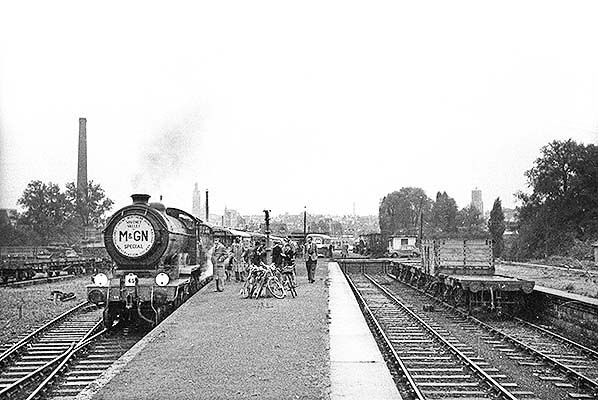
On 8 October 1960 the Midland & Great Northern Railway Society ran a special train covering several East Anglan lines that had already closed to passengers. The M. & G.N. and Waveney Valley Rail Tour started at City station at 12.30pm, the ECS having come from Norwich earlier in the day. It was possibly the only passenger train ever to use the new spur from the Bure Valley line to the Norwich City branch that had opened earlier in 1960.
Photo
by David Pearson
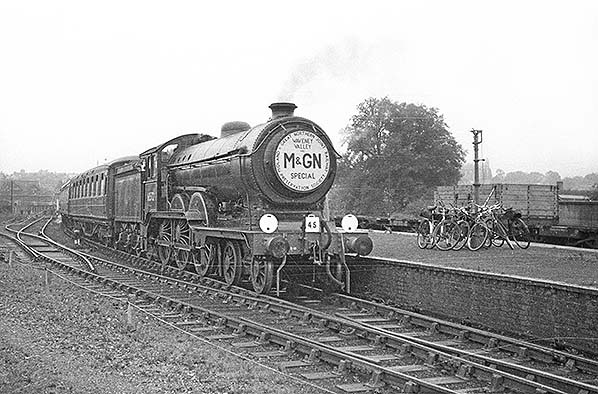
B12 4-6-0 61572 await departure fro Norwich City station hauling the M. & G.N. and Waveney Valley Rail Tour on 8 October 1960.
Photo by David Pearson 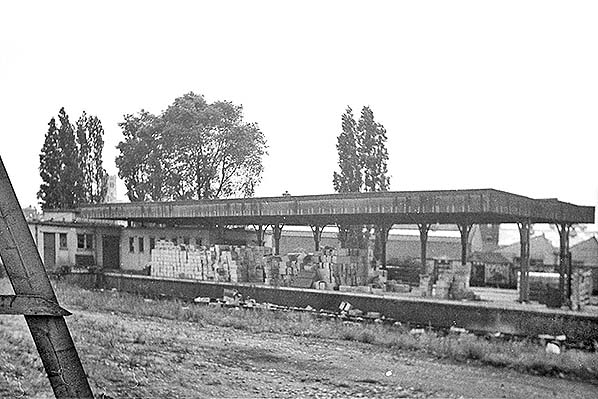
In June 1965, six years after passenger services ceased Norwich City’s east platform and buildings were derelict and used for storage. The rails remained in place.
Photo
by Bevan Price
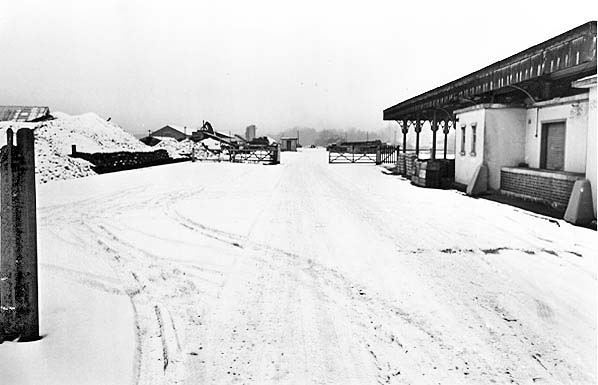
A snowy picture of then entrance to the remaining goods facilities at Norwich City in 1966. The station building and shortened awning were still in place.
Photo copyright Eastern Daily Press 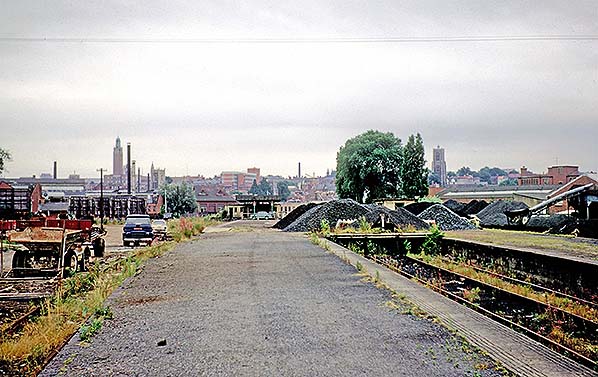 Looking south towards Norwich city centre from the east platform in August 1967. The station was still open for freight traffic at this time and it would remain open until February 1969. The only traffic is likely to have been coal and it is clear from this view that a coal merchant was still operating from this station. The coal sidings were some distance to the north-west of the passenger platfroms. Looking south towards Norwich city centre from the east platform in August 1967. The station was still open for freight traffic at this time and it would remain open until February 1969. The only traffic is likely to have been coal and it is clear from this view that a coal merchant was still operating from this station. The coal sidings were some distance to the north-west of the passenger platfroms.Photo by David Pearson 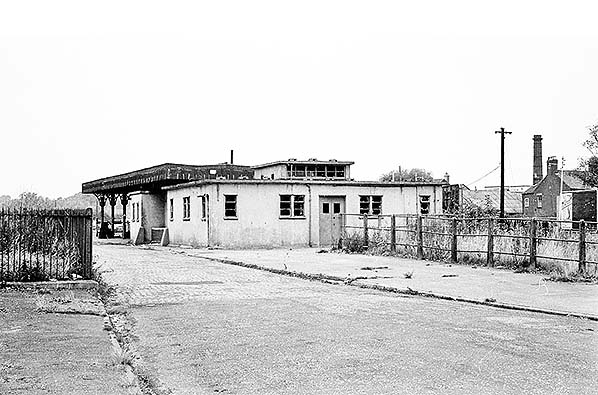
Norwich City finally closed to all traffic in 1969 by which time the state of dereliction was clear to see. The post-war station building, constructed as a temporary measure after the 1942 bombing of the city, was still in place.
Photo from Stuart McPherson's Flickr Photostream 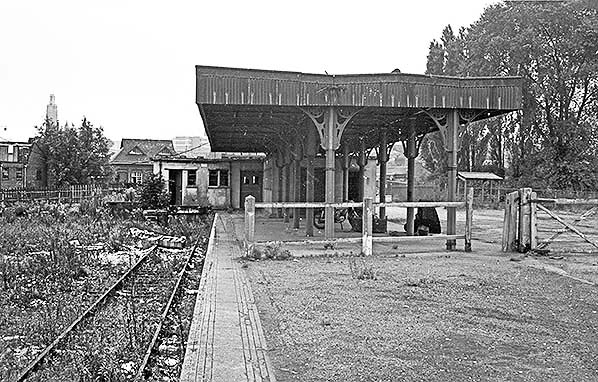 The abandoned east platform at Norwich City as it was in 1969 when the line closed completely.
Photo from Stuart McPherson's Flickr Photostream  Norwich City was a sorry sight in January 1970. Norwich City was a sorry sight in January 1970.Photo from John Mann collection 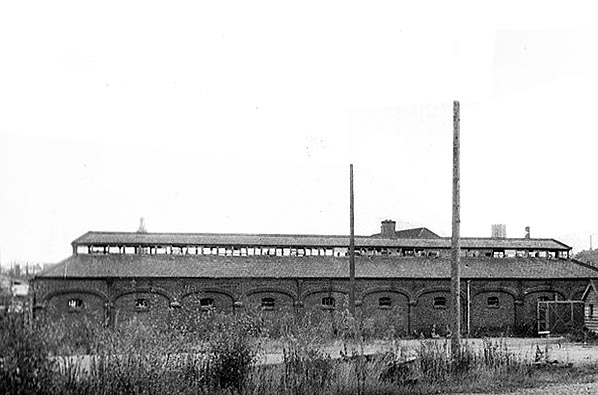
The handsome stables block at the road entrance to Norwich City’s goods yard as seen in 1973. The weigh office is seen on the far right in front of the building. The main access into the goods yard was between the stable block and the weigh office.
Photo by Joe Mason from his blog for memories of East Anglia 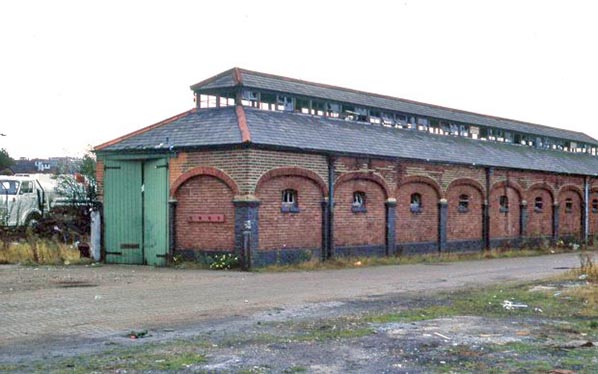
The stable block at Norwich City in 1973.The picture was taken shortly before the contractors moved in to clear the goods yard site which is now Barker Streeet. The building can be seen ion two of the 1949 aerial views.
Photo by Joe Mason from his blog for memories of East Anglia 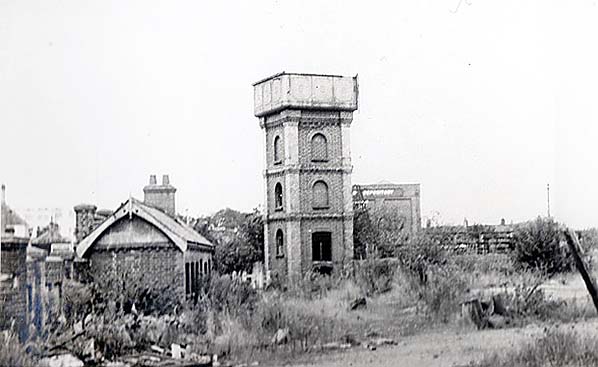 Norwich City station had two water tanks mounted on brick towers. The larger one was sited alongside the engine shed road to the north of the passenger platforms. This smaller tower was sited at the south end of the coal yard. It is visible on one of the 1949 aerial photos. Pickford’s warehouse is seen in the background
Photo by Joe Mason from his blog for memories of East Anglia 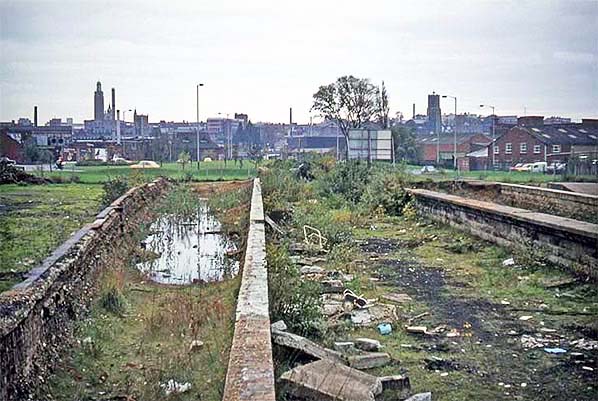
Name
Photo
by Mark Dufton
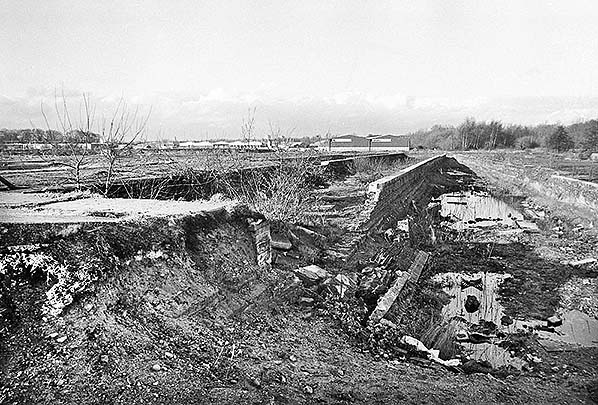
When this photograph was taken in January 1977 the site of Norwich City station had been extensively cleared for redevelopment. The remains of the bay platforms and buffer-stops were still in place. The east side platform facing, on the right of the image, has survived to some extent and was dug out by the Friends of Norwich City Station after 2011
Photo by David Burrows from his Flickr photostream 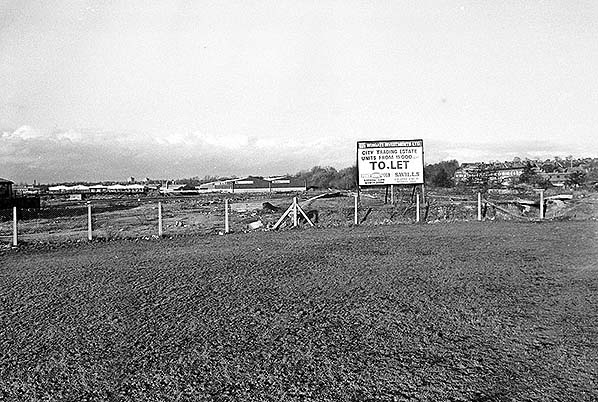
Looking north from the former station platform area in January 1977, the site of Norwich City had been taken over by property developers and tracts of land were for sale.
Photo by David Burrows from his Flickr photostream 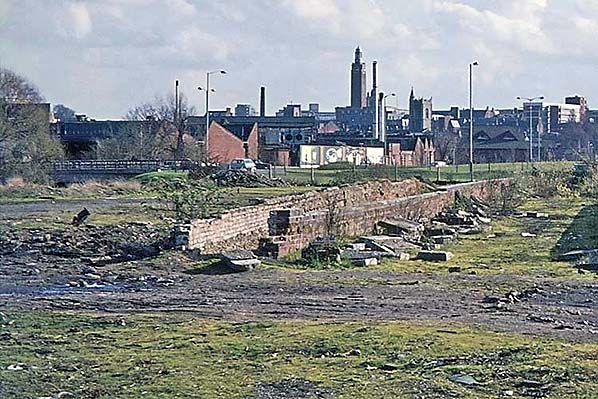 Name
Photo by Mark Dufton 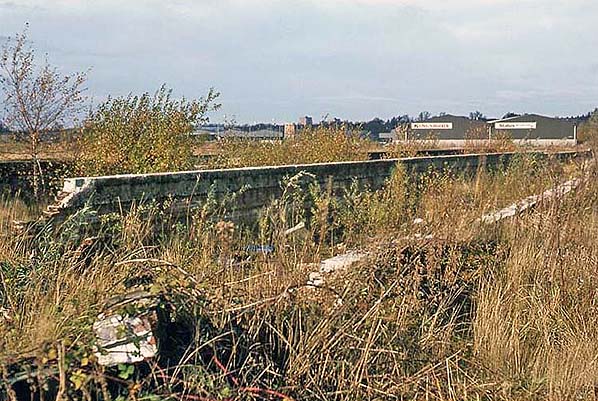
Name
Photo
by Mark Dufton
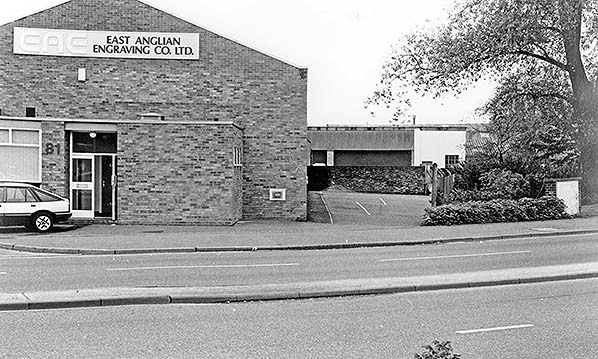
This is approximately where the entrance to Norwich City station stood. By May 1984 the extensive business park that occupies most of the former railway land had been largely completed, Station Road obliterated, subsumed under a new dual carriagway and roundabout.
Photo by John Mann 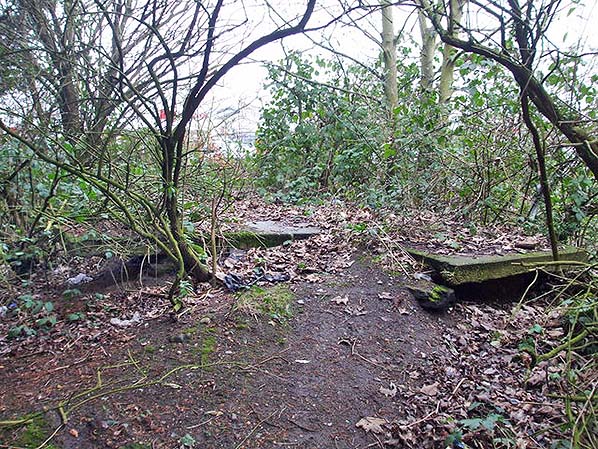
Nature had taken over the undeveloped parts site of Norwich City station by February 2009 when this photo of the bay platform was taken.
Photo by Ashley Dean, reproduced from Geograph under creative commons licence 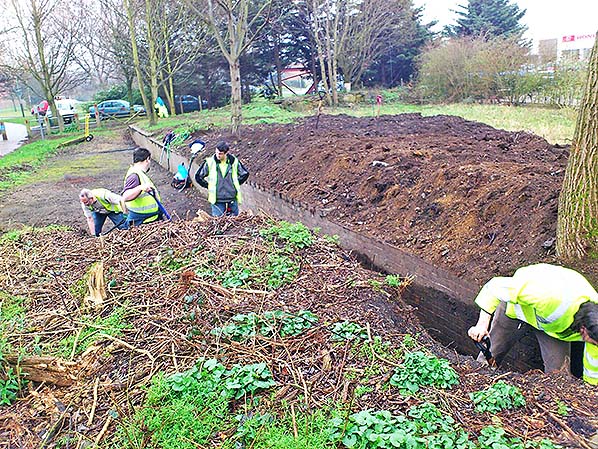 In 2012 ‘Friends of Norwich City Station’ had discovered remains of the infrastructure and began to dig them out and record them. This image, from March of that year, shows the facing of the east bay platform beside Marriott’s Way cycleway that had not long been completed on the former track-bed north of the city. In 2012 ‘Friends of Norwich City Station’ had discovered remains of the infrastructure and began to dig them out and record them. This image, from March of that year, shows the facing of the east bay platform beside Marriott’s Way cycleway that had not long been completed on the former track-bed north of the city.Photo from Norwich City Station Preservation Group / FONCS 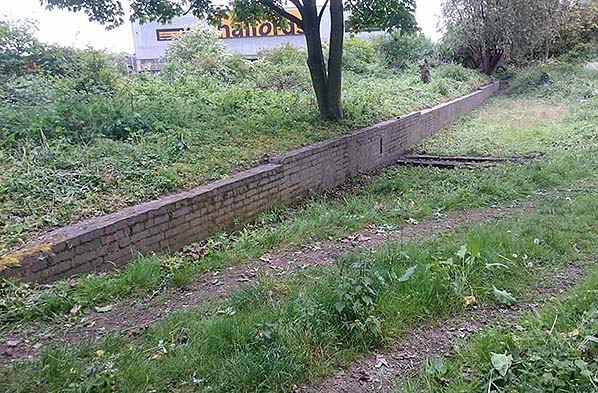
The dug-out remains of the east bay platform at Norwich City in the summer of 2012. A couple of abandoned sleepers have been uncovered.
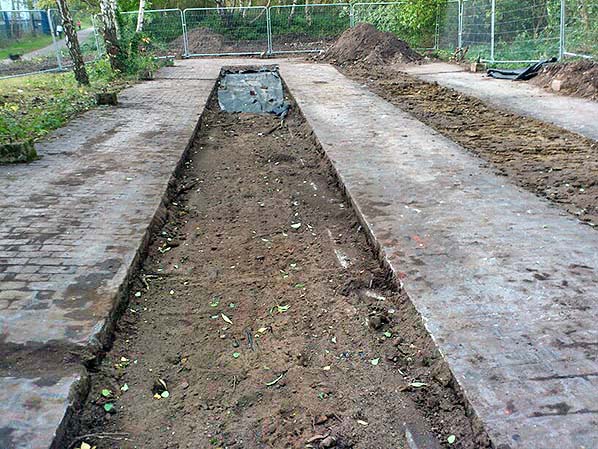
When the bomb-damaged engine shed at Norwich City was replaced in 1944 it was reduced from three roads to two and shortened considerably. In 2012 the Friends of Norwich City Station dug out the engineering-brick floor of the replacement shed and uncovered the filled-in pits. The concrete posts that supported the steel posts that carried the main structure of the building can be seen, the
steelwork removed. Photo from Norwich City Station Preservation Group / FONCS The camera position is immediately to the right of the location of the station portico in May 2018. Station Road, behind the camera, is no more and Barn Road, as now extended, runs, more or less, through where Norwich City station entrance stood.
Photo by Glen Kilday Around 2012 ‘The Friends of Norwich City Station’ carried out some investigative work at the site and uncovered some surviving remains of the station. This is the facing of the east-side bay platform as it was in May 2018, with nature again taking over.
Photo by Glen Kilday The camera is on the bay platform, east side, of Norwich City station looking northwards away from the city in May 2018. Some large trees that had grown up since closure have been recently felled
Photo by Glen Kilday At the east side of Norwich City station site the engine shed lay alongside the river. It was the second shed on the site: the first was damaged beyond repair in enemy airraids in April 1942. The engineering-brick flooring of the replacement shed was not removed after final demolition and lies hidden in the woods in May 2018.
Photo by Glen Kilday
|
 The L&FR thus established its Norwich base at City Station on 36 acres of marshy land at the north-western fringe of the city centre just outside the historic walls. The site was bordered by the River Wensum on its eastern side. By draining and culverting the contractor, recorded as Messrs. Wilkinson and Jarvis, created a flat area of land on which to build the railway infrastructure. They also bridged the river so that their site could be reached from the east of the city. The contarctor built a cast-iron road bridge obtained from local foundrymen Barnard, Bishop and Barnard and paid for by the railway company.
The L&FR thus established its Norwich base at City Station on 36 acres of marshy land at the north-western fringe of the city centre just outside the historic walls. The site was bordered by the River Wensum on its eastern side. By draining and culverting the contractor, recorded as Messrs. Wilkinson and Jarvis, created a flat area of land on which to build the railway infrastructure. They also bridged the river so that their site could be reached from the east of the city. The contarctor built a cast-iron road bridge obtained from local foundrymen Barnard, Bishop and Barnard and paid for by the railway company.  For passenger and parcels traffic the station had four platforms, two long on the outer faces and two short bays between the longer lines. From the road entrance a central carriageway lay between two long canopied shelters supported by ornate cast-iron pillars that stretched from a glazed circulation area beside the station entrance building almost to the bay platforms. The pillars were adorned with E & MR (Eastern & Midland Railway) spandrels, that being the company into which the Lynn & Dereham was absorbed in 1881. The bay platforms themselves offered no shelter to passengers. Passengers entering the station would find their needs catered for on their left where were booking hall, refreshment room and ladies’ waiting room and lavatory. The Station Master’s office lay behind the booking counter area. Gentlemen’s lavatories appear to have been provided in a separate building outside the main structure. On the right-hand side of the entrance arch were parcels and telegraph facilities.
For passenger and parcels traffic the station had four platforms, two long on the outer faces and two short bays between the longer lines. From the road entrance a central carriageway lay between two long canopied shelters supported by ornate cast-iron pillars that stretched from a glazed circulation area beside the station entrance building almost to the bay platforms. The pillars were adorned with E & MR (Eastern & Midland Railway) spandrels, that being the company into which the Lynn & Dereham was absorbed in 1881. The bay platforms themselves offered no shelter to passengers. Passengers entering the station would find their needs catered for on their left where were booking hall, refreshment room and ladies’ waiting room and lavatory. The Station Master’s office lay behind the booking counter area. Gentlemen’s lavatories appear to have been provided in a separate building outside the main structure. On the right-hand side of the entrance arch were parcels and telegraph facilities. 
 Beyond the limit of the platforms the railway’s locomotive servicing facilities were constructed between the running lines and the River Wensum. A three-road engine shed, its entrance facing south, was accessed from a headshunt where locomotive coal and drivers’ mess room were located. An engineer’s drawing circa 1893 and reproduced in Nigel’s book, shows a 45 foot turntable on the headshunt south of the engine shed as do OS 25inch maps prior to the 1947 edition (which was surveyed before the War in 1938). The turntable was replaced with a 60 foot example in 1931 probably because larger locomotives were in use on the line by that time. This was built not at the site of the smaller turntable but a short distance further north where a line with ashpits led past Norwich South signal box to the new locomotive turntable. The old turntable was removed and its pit infilled.
Beyond the limit of the platforms the railway’s locomotive servicing facilities were constructed between the running lines and the River Wensum. A three-road engine shed, its entrance facing south, was accessed from a headshunt where locomotive coal and drivers’ mess room were located. An engineer’s drawing circa 1893 and reproduced in Nigel’s book, shows a 45 foot turntable on the headshunt south of the engine shed as do OS 25inch maps prior to the 1947 edition (which was surveyed before the War in 1938). The turntable was replaced with a 60 foot example in 1931 probably because larger locomotives were in use on the line by that time. This was built not at the site of the smaller turntable but a short distance further north where a line with ashpits led past Norwich South signal box to the new locomotive turntable. The old turntable was removed and its pit infilled. 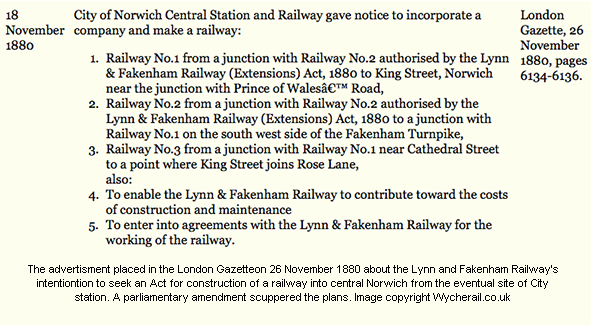
 The station boasted extensive goods facilities. At the goods yard’s road entrance from the city an attractive brick stables-block housed the railway’s horses that worked parcels and goods deliveries around the city. It had a slate roof with a glazed clerestory where opening lights provided ventilation to the 24 stalls. To the west of the station platforms a siding served Messrs. Cushions timber yard, on its way passing a compound occupied by the Norwich Gas Company. A lengthy two-road goods shed with offices at the ‘town’ end occupied two sidings. West of them lay a shed, dedicated to grain traffic, with a loading platform and two short sidings. An extensive yard with eleven long sidings provided facilities for a large number of merchants’ compounds. Around fifty different companies used the site at one time or another in the first half of the 20th Century. At the north end of the yard the siding was lined with cattle pens. The northern-most two sidings were not constructed until 1931. These served the needs of Norwich Corporation to receive stone for road-building. Alone amongst the goods sidings it had a crossing for locomotive release. All of the sidings were shunted from the north and the last northern outpost of Norwich City were two headshunts that allowed the yards to be worked without fouling the main line. These ended at the point where the running line to Melton Constable crossed the River Wensum on a rivetted steel bridge.
The station boasted extensive goods facilities. At the goods yard’s road entrance from the city an attractive brick stables-block housed the railway’s horses that worked parcels and goods deliveries around the city. It had a slate roof with a glazed clerestory where opening lights provided ventilation to the 24 stalls. To the west of the station platforms a siding served Messrs. Cushions timber yard, on its way passing a compound occupied by the Norwich Gas Company. A lengthy two-road goods shed with offices at the ‘town’ end occupied two sidings. West of them lay a shed, dedicated to grain traffic, with a loading platform and two short sidings. An extensive yard with eleven long sidings provided facilities for a large number of merchants’ compounds. Around fifty different companies used the site at one time or another in the first half of the 20th Century. At the north end of the yard the siding was lined with cattle pens. The northern-most two sidings were not constructed until 1931. These served the needs of Norwich Corporation to receive stone for road-building. Alone amongst the goods sidings it had a crossing for locomotive release. All of the sidings were shunted from the north and the last northern outpost of Norwich City were two headshunts that allowed the yards to be worked without fouling the main line. These ended at the point where the running line to Melton Constable crossed the River Wensum on a rivetted steel bridge.  Just before midnight on Monday 27 April 1942 began a week of bombing that left many of the factories and residential areas in and around Norwich in almost total ruin. The Nazi campaign, part of a wave of raids on historic cities allegedly compiled from pre-war Baedeker tourist guides, continued each night that week until the early hours of Friday. There were many casualties causing both deaths and serious injuries amongst the civilian population. Although the historic Cathedral, Castle, many other churches and the Guildhall were left untouched, City Station was completely devastated (see the pictures below). It is quite fair to say that the station was never returned to its glory days.
Just before midnight on Monday 27 April 1942 began a week of bombing that left many of the factories and residential areas in and around Norwich in almost total ruin. The Nazi campaign, part of a wave of raids on historic cities allegedly compiled from pre-war Baedeker tourist guides, continued each night that week until the early hours of Friday. There were many casualties causing both deaths and serious injuries amongst the civilian population. Although the historic Cathedral, Castle, many other churches and the Guildhall were left untouched, City Station was completely devastated (see the pictures below). It is quite fair to say that the station was never returned to its glory days. 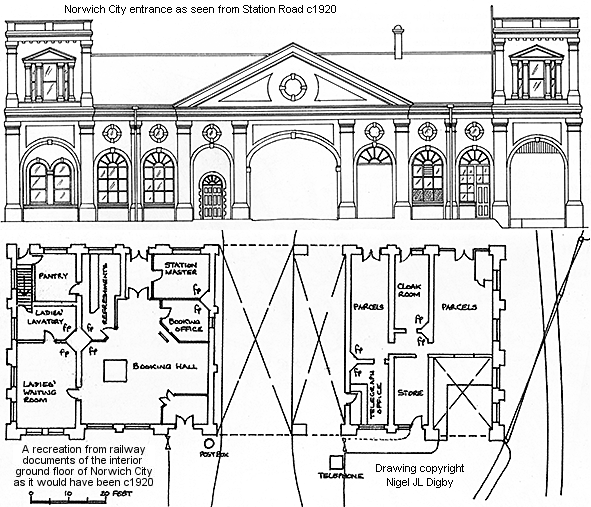
 Mondays and Thursdays an additional train left at 9.20 in the morning for Melton Constable. Trains at 7.40am, 11.05am and 7.45 in the evening either gave a good connection or joined trains for Lynn and beyond at Melton Constable. A market day train left at 5.10pm on Saturdays: on weekdays a 5.30 departure ran just four miles to Drayton, returning eight minutes after arriving there. Seven down trains from Melton Constable terminated at Norwich on weekdays: the Saturday market train arrived at 11.27am. As with up services three offered connections or through carriages from the west. There were two Sunday down trains. In the up direction a non-stop working to Melton Constable left at 2.10 in the afternoon. Ten minutes later a stopping service followed it! None offered anything like good connections at the junction in either direction.
Mondays and Thursdays an additional train left at 9.20 in the morning for Melton Constable. Trains at 7.40am, 11.05am and 7.45 in the evening either gave a good connection or joined trains for Lynn and beyond at Melton Constable. A market day train left at 5.10pm on Saturdays: on weekdays a 5.30 departure ran just four miles to Drayton, returning eight minutes after arriving there. Seven down trains from Melton Constable terminated at Norwich on weekdays: the Saturday market train arrived at 11.27am. As with up services three offered connections or through carriages from the west. There were two Sunday down trains. In the up direction a non-stop working to Melton Constable left at 2.10 in the afternoon. Ten minutes later a stopping service followed it! None offered anything like good connections at the junction in either direction.  With Nationalisation in 1948 the M & GN lines passed from operational control of the LNER into British Railway’s Eastern Region and all vestiges of ‘joint’ management ceased. In 1949 the Norwich City line was busier than we have seen previously: nine weekday trains ran to Melton Constable between 6.26 in the morning and 7.15pm. The 9.30am departure conveyed through carriages to Birmingham (New Street) and Leicester (LMR). The railway’s managers obviously expected Norwich to be a lively place on Saturday evenings because they scheduled two late trains. One, at 10.45, ran only as far as Whitwell and Reepham, 13 miles from the city. Fifteen minutes later a through working to Weybourne followed it. There were nine down trains on weekdays, ten on Saturdays. The balancing working of through carriages from Midland cities arrived at 7.13 in the evening.
With Nationalisation in 1948 the M & GN lines passed from operational control of the LNER into British Railway’s Eastern Region and all vestiges of ‘joint’ management ceased. In 1949 the Norwich City line was busier than we have seen previously: nine weekday trains ran to Melton Constable between 6.26 in the morning and 7.15pm. The 9.30am departure conveyed through carriages to Birmingham (New Street) and Leicester (LMR). The railway’s managers obviously expected Norwich to be a lively place on Saturday evenings because they scheduled two late trains. One, at 10.45, ran only as far as Whitwell and Reepham, 13 miles from the city. Fifteen minutes later a through working to Weybourne followed it. There were nine down trains on weekdays, ten on Saturdays. The balancing working of through carriages from Midland cities arrived at 7.13 in the evening. 
 Goods traffic apparently thrived throughout the life of the station and continued to be important, particularly in respect of coal carriage, after passenger traffic ceased from March 1959. During a 12-week sample period ending in October 1958 the four Norwich stations handled goods in order of 70,000 tons, of which more than 25,000 passed through City station’s yard. On 12 September 1960 a short, tightly curved new length of railway was constructed at Themelthorpe, approximately 15 miles north of Norwich. It joined the former Great Eastern Bure Valley line from Wroxham with the Midland & Great Northern near where the two had crossed without connecting. This new line allowed goods traffic to continue to reach Norwich City despite closure of almost all of the M&GN system. It continued in use long after the line into Norwich closed to serve quarrying at Lenwade.
Goods traffic apparently thrived throughout the life of the station and continued to be important, particularly in respect of coal carriage, after passenger traffic ceased from March 1959. During a 12-week sample period ending in October 1958 the four Norwich stations handled goods in order of 70,000 tons, of which more than 25,000 passed through City station’s yard. On 12 September 1960 a short, tightly curved new length of railway was constructed at Themelthorpe, approximately 15 miles north of Norwich. It joined the former Great Eastern Bure Valley line from Wroxham with the Midland & Great Northern near where the two had crossed without connecting. This new line allowed goods traffic to continue to reach Norwich City despite closure of almost all of the M&GN system. It continued in use long after the line into Norwich closed to serve quarrying at Lenwade. 

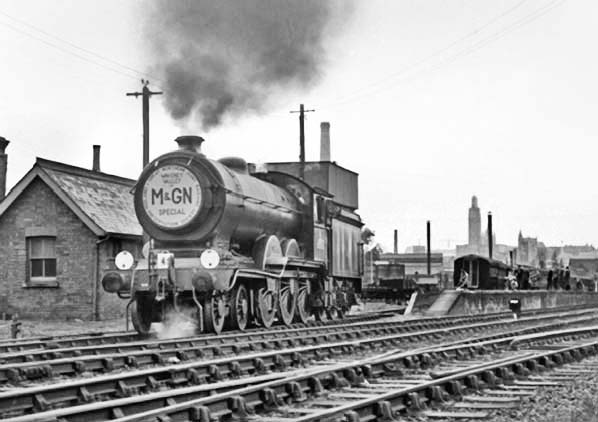











 Home Page
Home Page